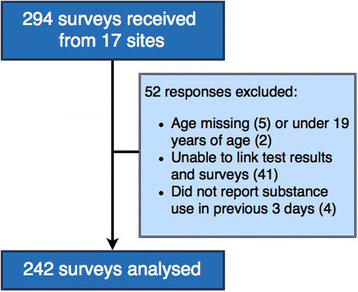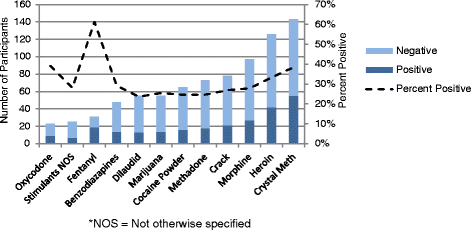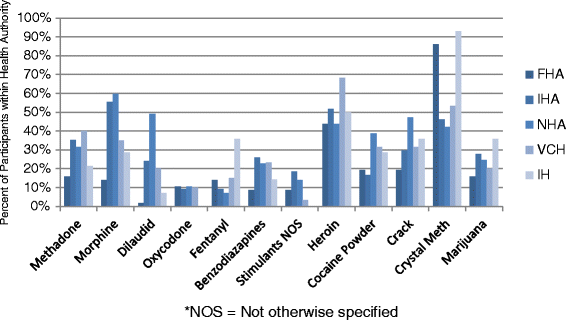Why the FUSS (Fentanyl Urine Screen Study)? A cross-sectional survey to characterize an emerging threat to people who use drugs in British Columbia, Canada
- PMID: 26577516
- PMCID: PMC4650899
- DOI: 10.1186/s12954-015-0088-4
Why the FUSS (Fentanyl Urine Screen Study)? A cross-sectional survey to characterize an emerging threat to people who use drugs in British Columbia, Canada
Abstract
Background: Fentanyl-detected illicit drug overdose deaths in British Columbia (BC) recently increased dramatically from 13 deaths in 2012 to 90 deaths in 2014, signaling an emerging public health concern. Illicit fentanyl is sold as pills or powders, often mixed with other substances like heroin or oxycodone; reports from coroners suggested that fentanyl was frequently taken unknowingly by people who use drugs. This study aimed to assess the prevalence and characteristics of fentanyl use among clients accessing harm reduction (HR) services in BC.
Methods: Participants attending HR services at 17 sites across BC were invited to complete an anonymous questionnaire describing drugs they have used within the last 3 days and provide a urine sample to test for fentanyl. Data from eligible participants were analyzed using descriptive, bivariate, and multivariate statistical methods.
Results: Surveys from 17 HR sites were received, resulting in analysis of responses from 242 eligible participants. Most participants used multiple substances (median = 3), with crystal meth (59%) and heroin (52%) use most frequently reported. Seventy participants (29%) tested positive for fentanyl, 73% of whom did not report using fentanyl. Controlling for age, gender, and health authority, reported use of fentanyl (odds ratio (OR) = 6.13, 95% confidence interval (CI) = [2.52, 15.78], p < 0.001) and crystal methamphetamine (OR = 3.82, 95% CI = [1.79, 8.63], p < 0.001) use were significantly associated with fentanyl detection.
Conclusions: The proportion of those testing positive who did not report knowingly using fentanyl represents a considerable public health concern. The risk of overdose among this vulnerable population highlights the need for targeted HR strategies, such as increased accessibility to naloxone, overdose education, and urine screens.
Figures
References
-
- British Columbia Coroners Service. Information bulletin: BC Coroners Service warns of deaths related to illicit fentanyl use. 2014. http://www.pssg.gov.bc.ca/coroners/reports/docs/2014JAG0150-000766.pdf. Accessed 27 Oct 2015.
-
- Canadian Centre on Substance Abuse, Canadian Community Epidemiology Network on Drug Use. CCENDU drug alert—increasing availability of counterfeit oxycodone tablets containing fentanyl. 2014. http://www.ccsa.ca/Resource%20Library/CCSA-CCENDU-Oxycontin-Fentanyl-Ale... Library/CCSA-CCENDU-Oxycontin-Fentanyl-Alert-2014-en.pdf. Accessed Oct 27, 2015.
-
- Poklis A. Fentanyl: A Review for Clinical and Analytical Toxicologists. Clin Toxicol [Internet]. Informa UK Ltd UK; 1995;33(5):439–47. http://www.tandfonline.com/doi/abs/10.3109/15563659509013752?journalCode... Accessed 11 May 2015. - DOI - PubMed
-
- Jafari S, Buxton JA, Joe R. Rising fentanyl-related overdose deaths in British Columbia. Can J Addict. 2015;6(1):4–6.
Publication types
MeSH terms
Substances
LinkOut - more resources
Full Text Sources
Other Literature Sources
Medical




